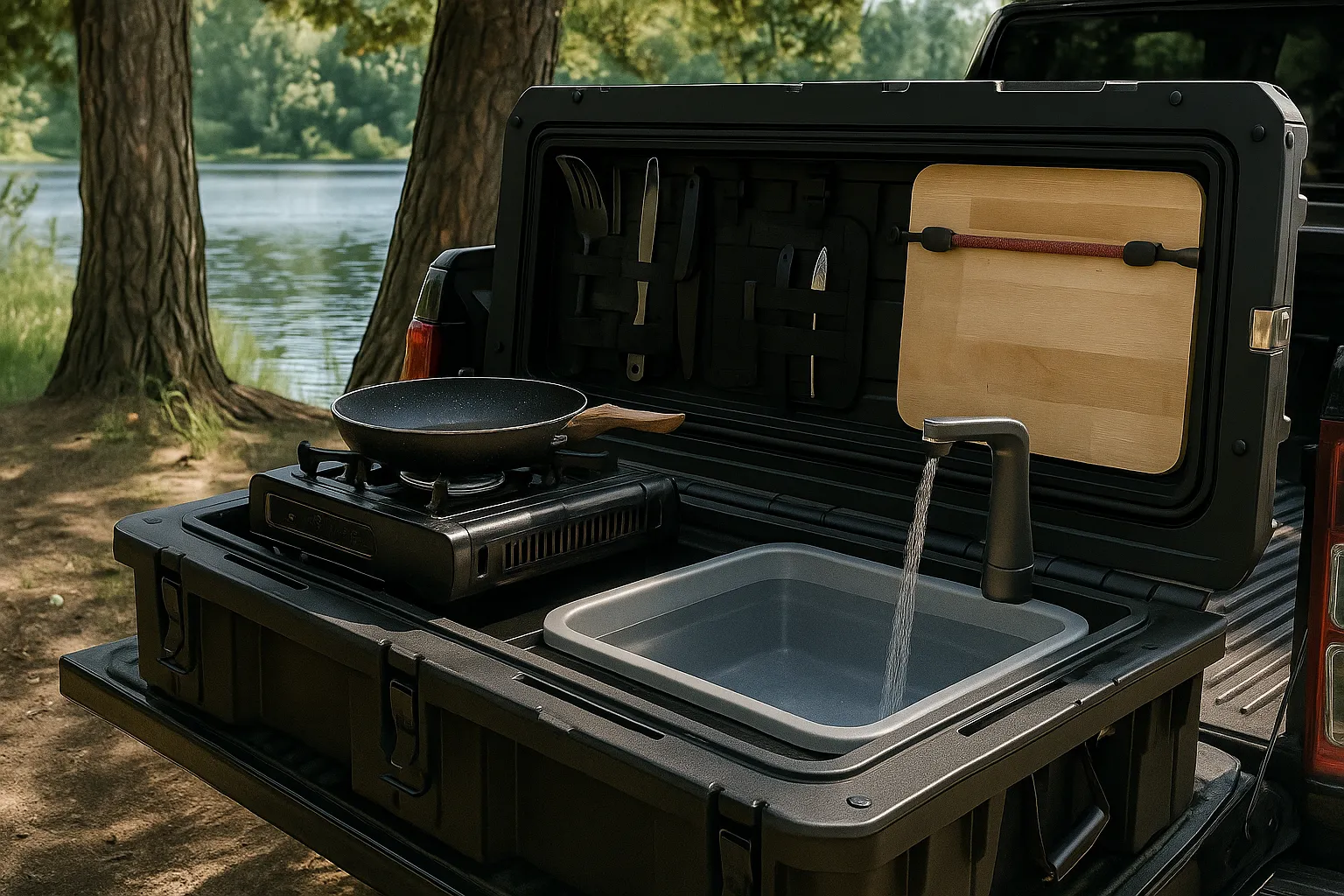The Rise of All-in-One Camp Kitchen Setups Among Overlanders
In recent years, the overlanding community has witnessed a significant shift—not just in the vehicles people drive or the trails they take, but in the way they live while on the road. What was once a niche hobby for hardcore 4×4 enthusiasts has evolved into a global movement blending travel, self-reliance, and minimalist living. And at the heart of this transformation lies one crucial innovation: the all-in-one camp kitchen.
These compact, modular setups are quickly replacing improvised cooking systems cobbled together with crates, propane tanks, and foldable tables. Instead of fumbling with mismatched gear in the dirt or relying on scattered equipment stuffed into multiple storage bins, today’s overlanders are choosing self-contained units that combine stoves, sinks, prep surfaces, and storage into a single, efficient solution.
What’s driving the shift? Practicality, for one. Space is limited in any rig, whether it’s a full-size truck or a minimalist SUV. Overlanders now demand equipment that maximizes utility without sacrificing mobility. An all-in-one camp kitchen provides exactly that — a way to prepare real meals in remote locations without the stress of constant setup, cleanup, or forgetting key items.
But it’s not just about function — it’s also about freedom. Modern camp kitchens are designed to be deployed in under a minute, with everything from cookware to running water included. That means less time unpacking, and more time enjoying the solitude of the backcountry or the view from a high ridge.
From vanlifers trekking across North America to expedition teams navigating the Australian Outback, the trend is clear: modular, all-in-one camp kitchen systems are becoming standard gear. And with brands like CampKitchen.us offering durable, well-equipped models built for real-world use, the days of makeshift meal setups may soon be behind us.
A Cultural Shift Toward Simplicity and Self-Sufficiency
For decades, overlanders have prided themselves on self-reliance. But as the community grows—and draws in families, digital nomads, and long-distance travelers—so do expectations around comfort, cleanliness, and consistency. Cooking is no longer an afterthought or a matter of throwing cans on the fire; it’s part of the lifestyle. Camp kitchens have evolved to meet this need, offering a compact and predictable way to prepare meals in the wild.
A well-designed camp kitchen allows overlanders to cook real food, maintain better hygiene, and reduce dependency on crowded campgrounds or fast food. With integrated water systems, collapsible sinks, dedicated utensil storage, and secure spots for cookware, these setups remove the frustration of forgetting essential gear—or worse, having it rattling loose in the back of the vehicle.
“One of the biggest game-changers in our build was installing a full camp kitchen,” says Elena Martinez, a former city-dweller turned full-time overlander. “We no longer have to tear the whole truck apart just to find a spoon or heat up soup. Everything is in one place, and it works every time.”
What to Look for in a True All-in-One Camp Kitchen
As demand increases, so does the variety of camp kitchens available. Some are DIY builds customized into drawer systems, while others are fully enclosed products like those offered by CampKitchen.us, designed to be ready straight out of the box.
The best all-in-one systems typically include:
- A compact, high-output stove (propane or butane)
- A rechargeable faucet with an onboard water tank
- A collapsible sink or basin for washing
- A food-safe prep surface or cutting board
- Organized cutlery, utensils, and cookware
- Weatherproof casing for durability and mobility
The most important factor? Efficiency. Overlanders value systems that set up fast, stay organized, and require minimal repacking or troubleshooting. The more you’re able to “grab and go,” the more time you spend exploring instead of organizing.
Built for the Road — Not Just the Campsite
Unlike traditional camping gear that’s meant to stay in one spot, overland equipment must be able to handle vibration, dust, temperature swings, and unpredictable terrain. That’s why the best camp kitchens are built tough—with durable hinges, weather-sealed cases, and food-grade materials that can stand up to both rocky trails and sudden rainstorms.
Some models go further, including features like rubber seals, modular inserts, and integrated lighting — a reflection of the fact that today’s overlanders are often cooking meals in the dark, in motion, or in less-than-ideal weather conditions.
Brands like CampKitchen.us have embraced this reality, producing systems that are not only functional but field-tested. Their flagship model, for example, is designed to be tailgate-ready, waterproof, and deployable in seconds, giving overlanders a consistent solution whether they’re boondocking in Arizona or navigating the Pacific Northwest.

Leave a Reply